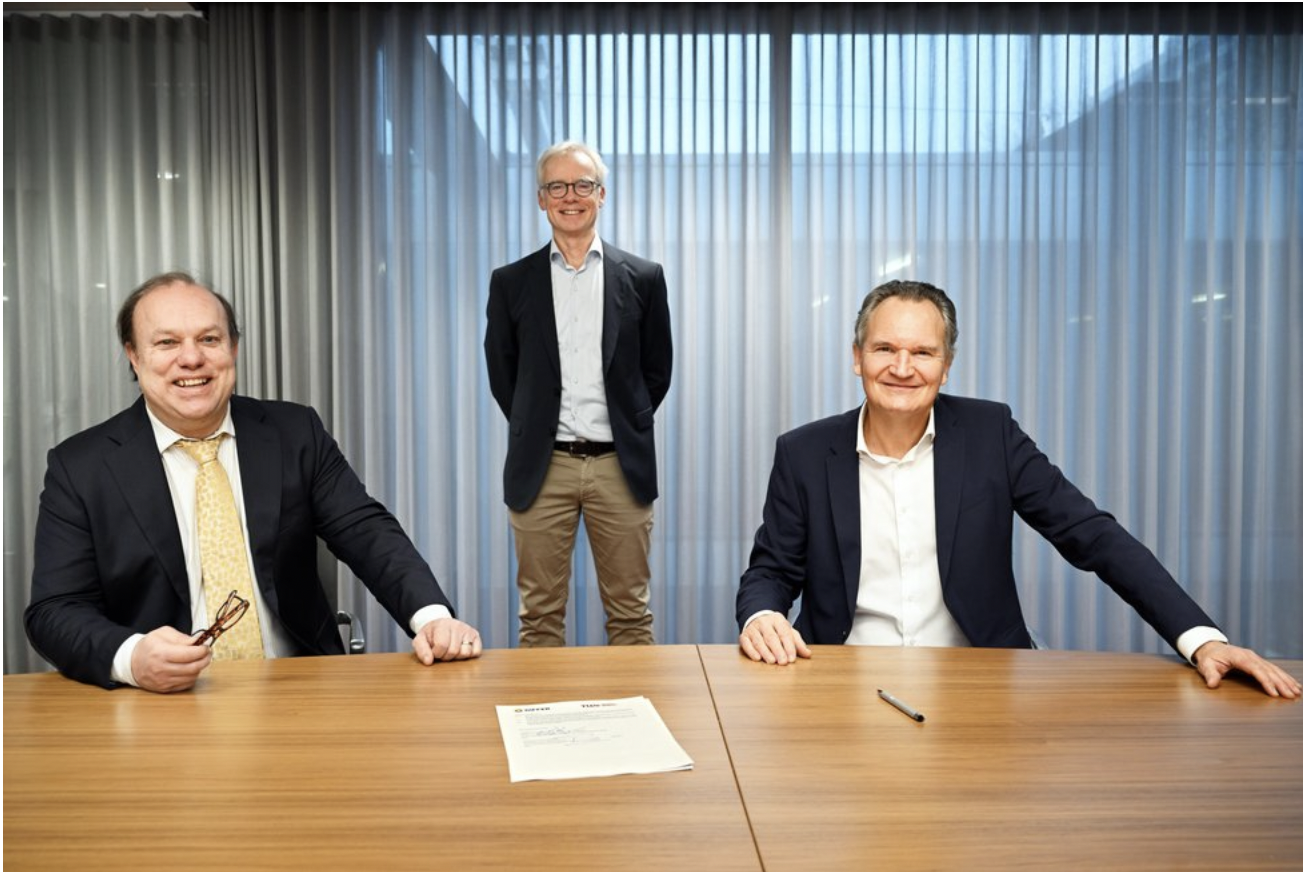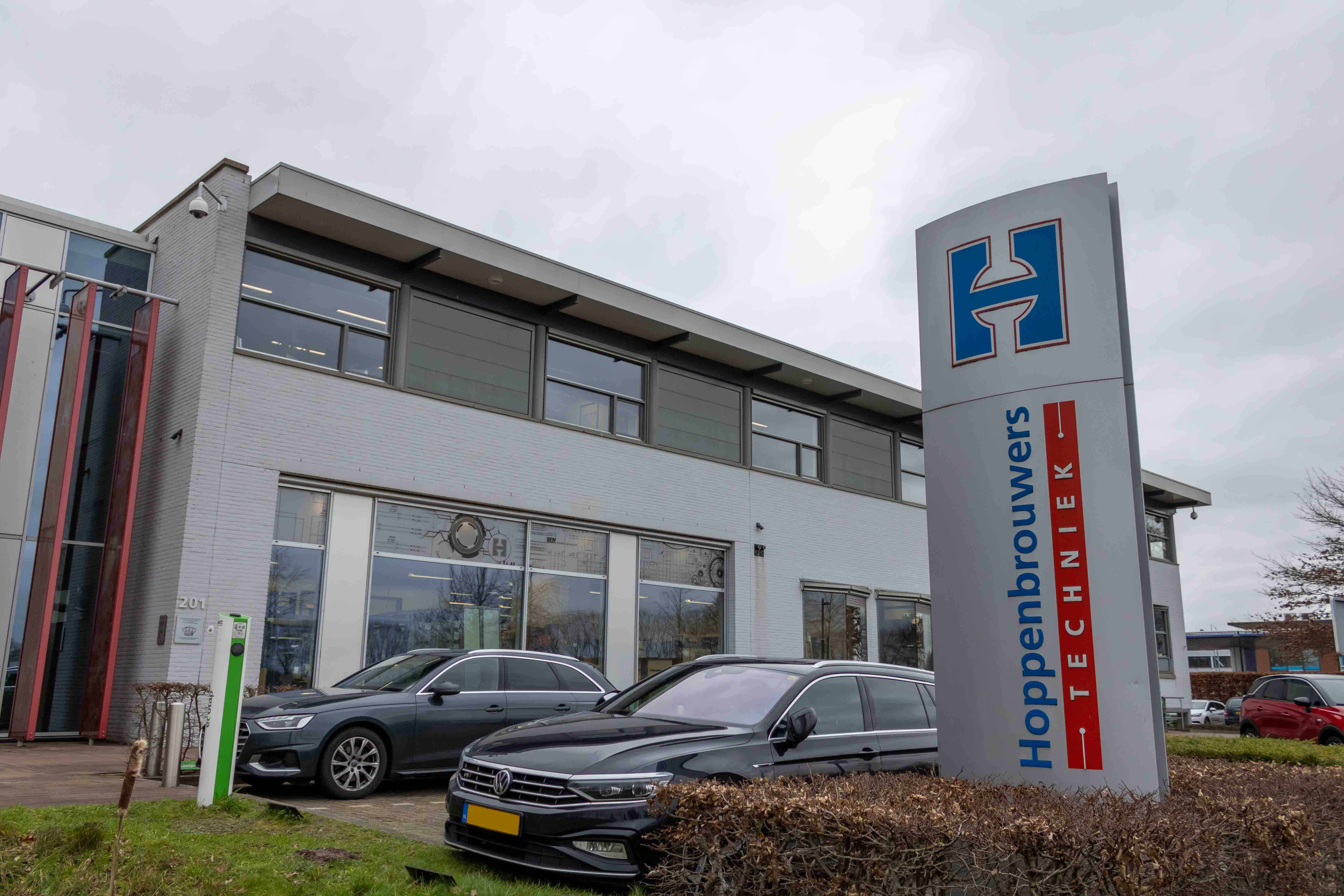
Research institute DIFFER and Eindhoven University of Technology will work together on a national facility for research with high-energy X-rays. For this type of research, Dutch researchers currently need to reserve scarce, expensive time at enormous synchrotrons abroad. However, TU/e is at an advanced development stage of a technology that generates high-energy X-rays with small, relatively inexpensive set-ups. This could boost research into materials for the energy transition, for instance, so TU/e in a press release.
Robert-Jan Smits, President of the TU/e Executive Board, and DIFFER director Marco de Baar signed a Memorandum of Understanding last Thursday. The aim is to eventually realize a research facility at DIFFER in Eindhoven which will be based on technology developed under the leadership of TU/e Professor Jom Luiten within the Interreg consortium Smart*Light. The research facility should be operational within a few years. The parties are open to collaboration with third parties and the plan fits within the ambition of the Ministry of Education, Culture and Science to strengthen the national research infrastructure.
“The importance of having such a research facility in the Netherlands should not be understated,” says Robert-Jan Smits of TU/e. “The demand is enormous in many scientific fields, so this is going to greatly advance science in the Netherlands. This is particularly necessary in the field of materials research for the energy transition. We all need to rapidly develop energy technologies that will help keep climate change under control, and this new facility will play an important role in that.”
New Materials
DIFFER develops and researches materials for the energy transition. “We prefer to do this together with others: companies and researchers from the outside world”, says Marco de Baar, of DIFFER. “The development of this X-ray facility fits in with our approach to developing and enabling complex measuring instruments for materials research for energy applications. This future facility will allow for better analyses of new materials, such as for electrodes and catalysts. We are therefore very happy with this step.”
Synchrotrons, or light sources based on circular particle accelerators, have been the workhorses of X-ray research for decades, enabling us to examine materials in a highly accurate manner. However, these are enormous installations with diameters of hundreds of meters and very high construction and operational costs. The Netherlands has no synchrotrons and there are only about ten in Europe.
Smart*Light
“These are so sought after that there are long waiting lists,” explains TU/e Professor Jom Luiten. “That puts the brakes on all kinds of research areas. In addition, long-term tests are not possible.” Luiten has therefore developed Smart*Light, an alternative technology which can do more or less the same with a set-up of just a few meters: the generation of extremely bright and coherent X-ray beams while also allowing the energy to be varied quickly.
This will enable the development of new materials needed for sustainable energy, such as for a nuclear fusion reactor or for hydrogen production. But there will also be great demand from medical research, nanotechnology, research into metal fatigue and research into historic art – imagine discovering overpainted layers in old masters, for example.
The Smart*Light prototype is as good as ready. Luiten expects the first tests to be carried out this year. Work is also underway on the further development of the test facility into a robust user facility in which multiple users with varying questions and user requirements can be accommodated. In the next phase, harder X-rays will be generated for research on high-density objects and the light intensity will be further increased to support even more users.
Read next: Predictive software for discovering materials wins UK award
Foto: DIFFER director Marco de Baar (left), TU/e Professor Jom Luiten and TU/e President Robert-Jan Smits at the signing of the MOU. Photo: Bart van Overbeeke.
Selected for you!
Innovation Origins is the European platform for innovation news. In addition to the many reports from our own editors in 15 European countries, we select the most important press releases from reliable sources. This way you can stay up to date on what is happening in the world of innovation. Are you or do you know an organization that should not be missing from our list of selected sources? Then report to our editorial team.






